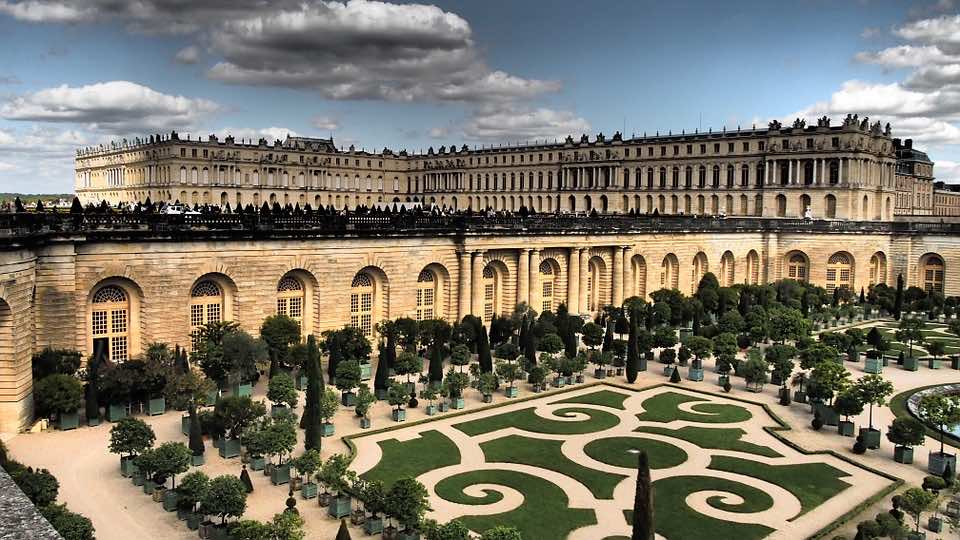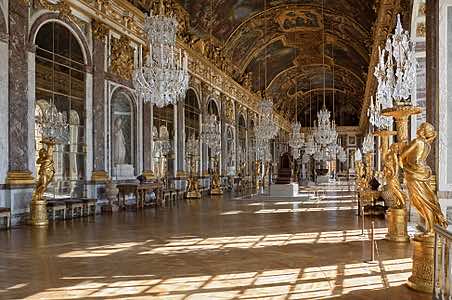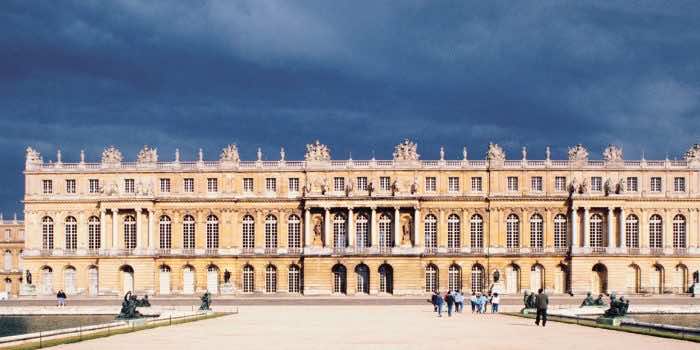Perhaps the most famous royal residence in the world is the Palace of Versailles. With its opulent interiors and magnificently grand exterior and gardens, the palace has captured the imagination of visitors and viewers for centuries. The scale and grandeur seen at Versailles is a direct result of the French monarchy’s desire to display its glory and wealth for the world to witness.
Built between 1624 and 1698, the Palace of Versailles is a magnificent example of French Baroque architecture, and is the most famous royal chateau in France. The gigantic scale of Versailles exemplifies the architectural theme of ‘creation by division’ – a series of simple repetitions rhythmically marked off by the repetition of the large windows – which expresses the fundamental values of Baroque art and in which the focal point of the interior, as well as of the entire building, is the king’s bed. Among its celebrated architectural designs is the Hall of Mirrors (Galerie des Glaces), which is one of the most famous rooms in the world. The palace and its decoration stimulated a mini-renaissance of interior design, as well as decorative art, during the 17th and 18th centuries.

From 1682 to the beginning of the French Revolution in 1789, the Palace of Versailles housed the King and the entire French royal court, a total of some 3,000 residents, making it a symbol of the absolutism and decadence of the Ancien Regime in general, and the French monarchy in particular. The royal chateau itself is not the only building complex in the grounds, which also include five chapels, plus the Grand Trianon (1687-88), the Pavilion Francais (1749), and the Petit Trianon (1762-8) as well as 800 hectares of gardens, landscaped in the classic French Garden style.

The complex features numerous architectural highlights, these included The Hall of Mirrors (1678-90) – the central gallery of the Palace – which comprised 17 mirror-clad arches reflecting the 17 windows. A total of 357 mirrors were used in its decoration. The ornamentations – the canvases along the ceiling that celebrate the apotheosis of the king, the polychrome marbles, the gilt bronzes -were organized by French arts supremo Charles Le Brun, and in this undertaking he can be said to have reached the peak of the expressive possibilities of French Baroque art. Another famous room is the Royal Opera of Versailles, designed by Ange-Jacques Gabriel (1698-82), which can seat up to 1200 guests. It was one of the earliest expressions of the Louis XVI style. Other important reception rooms, included: the Salons of Hercules, Diane, Mars, Mercury, Apollo, Jupiter, Saturn and Venus, all named after Roman gods and goddesses. The rooms were decorated with mural painting, much of it by Le Brun himself, which exhibited a strong influence from the Italian traditional of painting in Baroque architecture.

The Palace of Versailles stands as the epitome of French Baroque splendor and the grandeur that the French monarchy and nobility prioritized above all else. Today it is the one of the most visited tourist sites in the world and is still regarded as the finest example of French royal indulgence.


